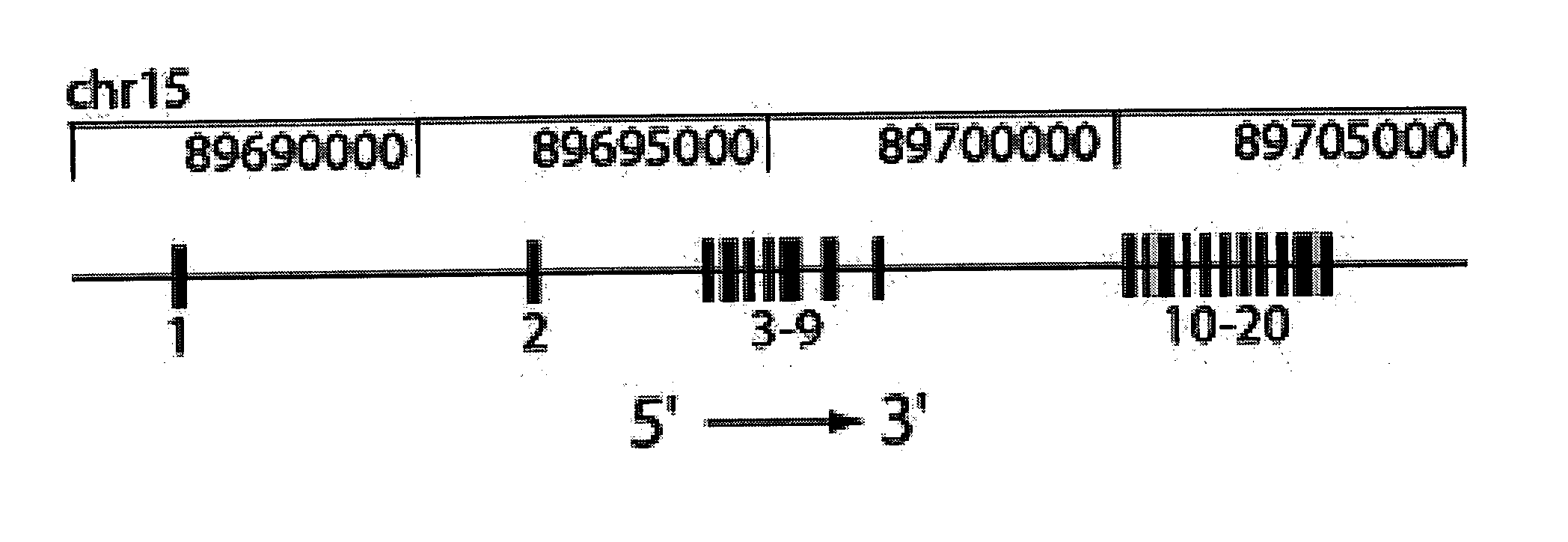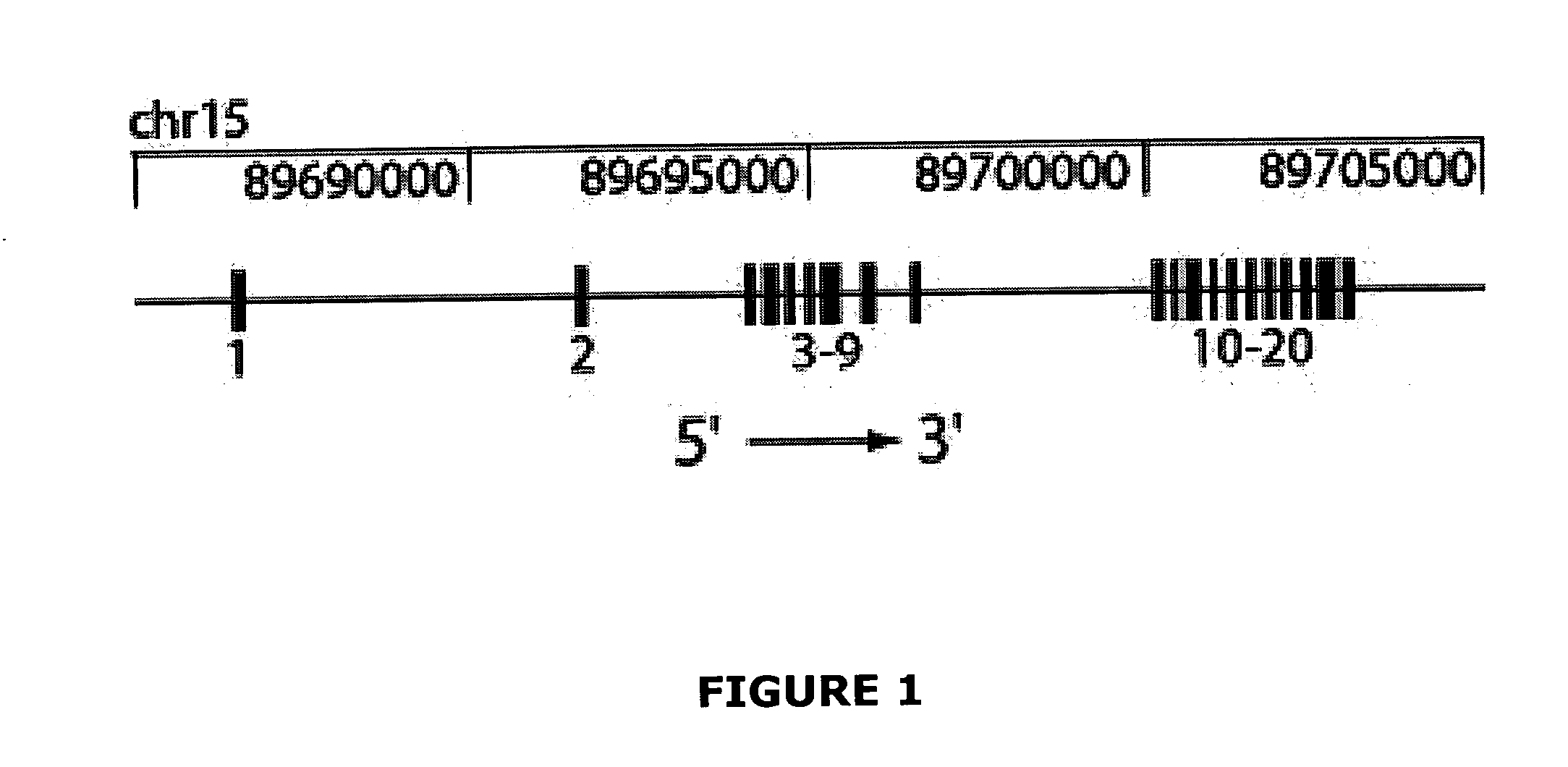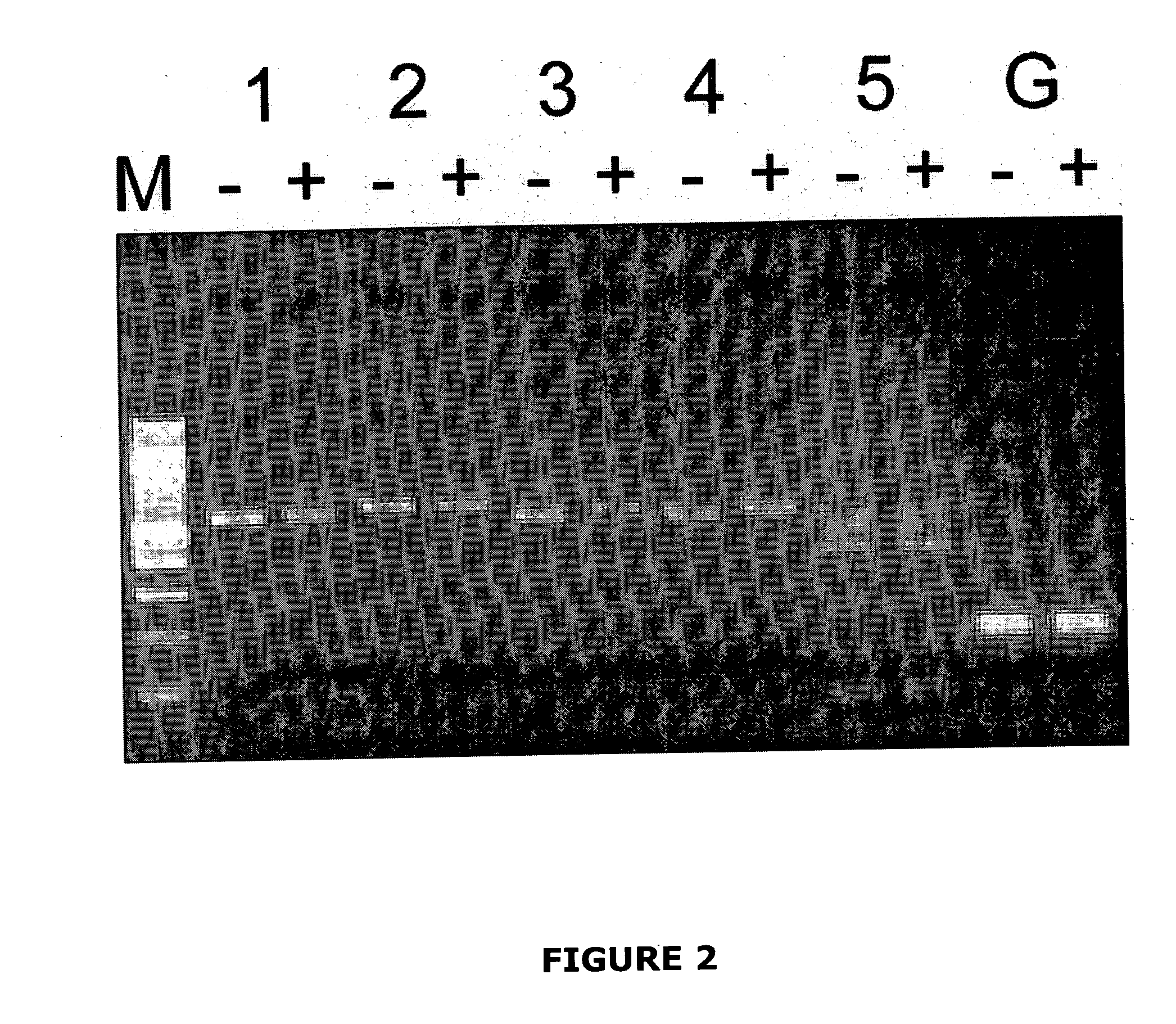Nessie nucleic acids, polypeptides and mutations, and methods of use thereof
a technology of polypeptides and mutations, which is applied in the field of discovery, identification and characterization of novel genes and proteins related to immune system function, and can solve problems such as immune system disorders
- Summary
- Abstract
- Description
- Claims
- Application Information
AI Technical Summary
Benefits of technology
Problems solved by technology
Method used
Image
Examples
example 1
ENU Mutagenesis
[0224] Male B6 were mutagenized with 3 doses of 85 mg ENU (ethylnitrosourea) / kg body weight by intra-peritoneal injection. After regaining fertility (approximately 3 months) the mutagenized mice (termed G0) were bred with wildtype B6 female mice to produce G1 founder male offspring. The G1 males were bred with wildtype B6 female mice, the offspring referred to as G2 mice. G2 female mice were bred with the G1 male parent to produce approximately 20 G3 offspring. The G3 offspring were phenotyped for outlier mutants. A mutant pedigree was identified when one or more of the G3 offspring exhibit a phenotype not seen in wildtype mice, where a pedigree is a series of G3 mice derived from the same G1 male parent. On identification of a mutant pedigree, the mutation were maintained by breeding to B6 wildtype mice, and were mapped by outcrossing to another mouse strain, where the offspring from this cross are intercrossed and the offspring are phenotyped and genotyped.
example 2
Phenotypic Screening of Mutant Mice
[0225] In a library bred from ENU-treated C57BL / 6J (B6) mice, a third generation male offspring was identified with low T cells in the peripheral blood. A mutant breeding line, Nessie, had been established by backcrossing this founder to normal B6 mice. Diminished peripheral T cells was inherited as a single recessive Mendelian trait.
example 3
Chromosomal Mapping of Mutations
[0226] To map the chromosomal location of the Nessie mutation, B6 Nessie animals were outcrossed to NOD.H2k congenic mice. Progeny from this cross (N1) were intercrossed. Simple sequence length polymorphism (SSLP) typing of tail DNA from NIF1 animals that exhibited low T cells revealed linkage to chromosome 15. The recombinational breakpoints in these animals was further delimited using markers between D15Mit159 and D15Mit172, positioning the Nessie mutation within a 46 megabase (Mb) region. Novel polymorphic markers were identified to further narrow the region containing the Nessie mutation to a 3.6 Mb region that was predicted to contain exons from 39 genes.
PUM
| Property | Measurement | Unit |
|---|---|---|
| Fraction | aaaaa | aaaaa |
| Fraction | aaaaa | aaaaa |
Abstract
Description
Claims
Application Information
 Login to View More
Login to View More - R&D
- Intellectual Property
- Life Sciences
- Materials
- Tech Scout
- Unparalleled Data Quality
- Higher Quality Content
- 60% Fewer Hallucinations
Browse by: Latest US Patents, China's latest patents, Technical Efficacy Thesaurus, Application Domain, Technology Topic, Popular Technical Reports.
© 2025 PatSnap. All rights reserved.Legal|Privacy policy|Modern Slavery Act Transparency Statement|Sitemap|About US| Contact US: help@patsnap.com



